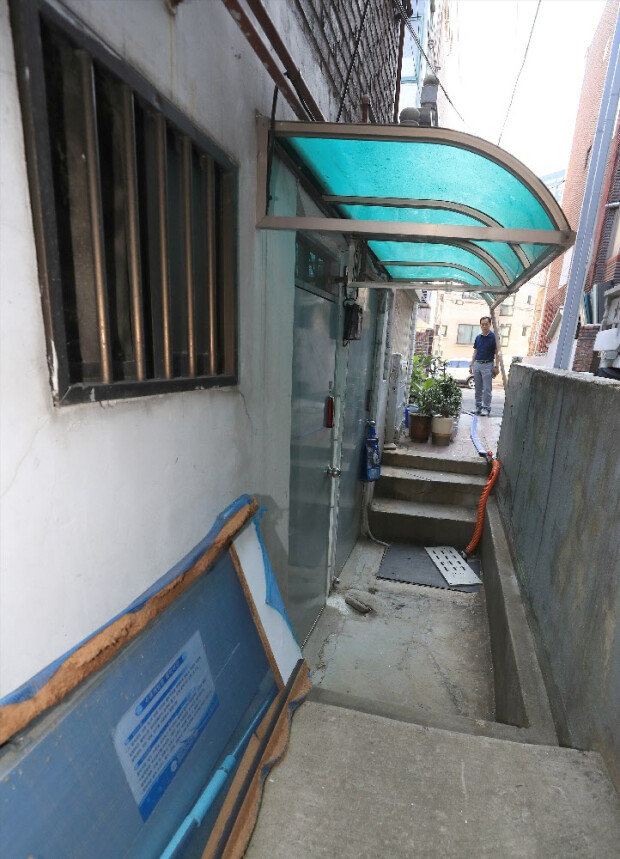Only 1% of semi-basement residents can 'escape'
Only 1% of semi-basement residents can 'escape'
Posted June. 10, 2023 08:39,
Updated June. 10, 2023 08:39

Last August, four residents living in semi-basement homes lost their lives due to heavy rain in Gwanak and Dongjak districts, Seoul. In response to the devastating disaster, the government and local authorities implemented several measures to address the issue. Still, it has been observed that only a few residents could evacuate from the semi-basement dwellings. As we anticipate record-high temperatures and increased flood risks this summer, there are growing concerns about the potential recurrence of such damages to semi-basement residents.
According to The Dong-A Ilbo’s report on Friday, only around 2,300 households were able to escape from semi-basement homes in Seoul through the “residence improvement” policy, such as monthly rent support and relocation to public rental housing, implemented by the Ministry of Land, Infrastructure and Transport and the Seoul Metropolitan Government. This accounts for just 1.1% of the total semi-basement houses in Seoul, where approximately 210,000 people reside. Despite Seoul City's efforts to address the issue, including their declaration to eliminate semi-basements after the heavy rain disaster, it is highly likely that most semi-basement residents continue to live in similar conditions to last year’s.
At the end of last year, a total of 1,300 households were able to move from semi-basements to rental houses, benefiting from the policies implemented by the Ministry of Land, Infrastructure and Transport and the Seoul Metropolitan Government, which included prioritized relocation to both public and private rental housing, as well as interest-free loans for deposits. “The number of available units was limited, and the substantial rental housing deposit, amounting to tens of millions of won, posed a significant financial burden for many residents,” said Choi Eun-yeong, director of the Korea Urban Research Institute.
Only 970 cases of ‘200,000 won monthly rent support for moving to the ground floor’ have been implemented. Dongjak District, which was heavily affected by the rainfall last August, had 312 beneficiaries, while Gwanak District had only 129. “The official figures represent a cumulative tally each time a beneficiary receives monthly rent support, and the actual number of households that received this assistance may be smaller than the reported figures,” said an insider of the Seoul Metropolitan Government.
The policy aimed at gradually reducing semi-basement housing by purchasing multi-household houses through Seoul Housing & Communities Corporation (SH) and Korea Land & Housing Corporation (LH) and converting them into warehouses has been experiencing lackluster results. Up until last month, SH managed to purchase only 98 semi-basement houses, falling significantly short of this year's target of 3,450 homes. On the other hand, LH did not make any purchases at all.
Given the persisting situation where the majority of residents remain trapped in semi-basement dwellings, there are valid concerns regarding the potential recurrence of heavy rain and flood damage similar to last year. The World Meteorological Organization has made predictions indicating the development of El Niño this summer, which entails elevated temperatures in the eastern Pacific near the equator. This climatic phenomenon is expected to contribute to record-breaking high temperatures and increased flood risks.
payback@donga.com · facthee@donga.com
Headline News
- N. Korea launches cyberattacks on S. Korea's defense companies
- Major university hospital professors consider a day off each week
- Italy suffers from fiscal deficits from ‘Super Bonus’ scheme
- Inter Milan secures 20th Serie A title, surpassing AC Milan
- Ruling and opposition prioritize spending amid tax revenue shortfalls







